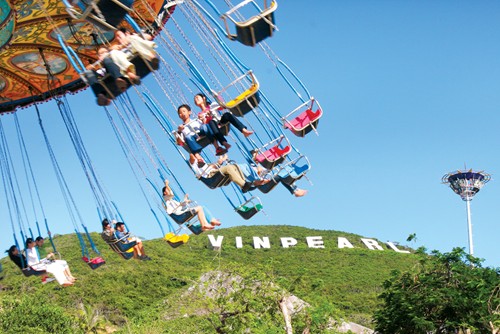|
Tourism property:
resort developers hit the jackpot
While the other investors get bogged down in
the frozen real estate market, the ones who poured money into high-end
coastal resorts now can pocket big money they earn from the right investment
deals.

The diagram of average room revenue
of the 4-5 star coastal resorts in the area from
Adam Bury, a senior executive of
CBRE, a real estate service provider, noted a surprise that the average room
rate and room occupancy rate of the coastal five-star hotels in
The average hotel room rate at the
5-star hotels in the area of Da Nang and Hoi An ancient town is now the
highest in Vietnam after making a 3.6 percent increase in 2013.
With 3,800 4-5 star rooms and the
regular room occupancy rate of 70-80 percent, the hotels have been running
very well, which is quite a big surprise in the eyes of the investors who
keep pessimistic in the current difficult conditions of the national economy.
The big changes have created new
“brands” to the area in the
The place where the billionaires
gathered in
With the event, Da Nang has become a
new brand that catches the eyes of the international event organizers as a
tourism city with standardized services: the standard air traffic and in-land
services, the international airport with 47 international and 247 domestic
flights per week, the high end coastal resorts with well known cooks from
Europe managed by foreign groups, the luxurious golf courses nearby and the
ready taxi helicopter service.
Analysts commented that it is a wise
move for coastal resorts to make investments to attract MICE (meeting,
incentives, conference, exhibition) tourists for now, when the world’s
tourism market witnesses a sharp decline.
The conferences of international
organizations or multi-national groups, therefore, have become the “aiming
points” of most of the event organizers and relevant service providers.
The developers of the 4-5 star
resorts and hotels in the coastal area have joined forces to set up a sea
tourism association which gathers the strength of the members to promote
tourism in the area, attract big conferences and international golf
tournaments.
While coastal resorts and hotels have
been prospering, the hotels in the center of the cities, from luxurious to
popular, have to struggle hard to exist. The hotel room rate and the room
occupancy rate of the hotels in the area have tumbled for the third
consecutive years.
Also according to CBRE, the room
occupancy rate there is 20-40 percent, while the average room rate is
incredibly low. Especially, the food and coffee service there have the prices
equal to that at middle class restaurants.
The hotel supply has increased
rapidly by 1,000 3-5 star hotel rooms a year. Hundreds of 1-2 star hotels
developed by the investors from
K. Chi,
|
Thứ Bảy, 30 tháng 11, 2013
Đăng ký:
Đăng Nhận xét (Atom)
Không có nhận xét nào:
Đăng nhận xét